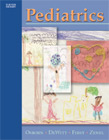SECTION 1: FUNDAMENTALS
1 The Pediatric Clinical Interview 2 Physical Examination:
Skills and Terminology, Normal Variations, and Implications of
Deviations from Normal 3 Principles of Dysmorphology 4,
Principles of Growth and Maturation 5, Principles of Child
Development and Developmental Assessment 6, Principles of
Decision Making 7, Principles of Clinical Epidemiology 8,
Principles of Office-based Practice 9, Principles of Genetics
10, Principles of Immunology 11, Principles of Metabolism 12,
Principles of Microbiology 13, Principles of Pathophysiology 14,
Principles of Nutrition
SECTION 2: HEALTH PROMOTION AND DISEASE PREVENTION
15, Disease Screening and Surveillance 16, Well Child Care: A
strategic approach 17, Improving Preventive Services for
Children 18, Immunizations: A Systems Approach 19, Promoting
Physical Activity 20, Promoting Healthy Nutrition 21, Genetic
Screening in Pediatrics 22, Smoking Cessation Counseling 23,
Injury Prevention 24, Violence Prevention 25, Health Promotion
and Disease Prevention -Developmental and Behavioral Surveillance
SECTION 3: GENERAL MEDICAL CARE
3.A- Emergent Medical Care 26, Out-of-hospital Emergency Care,
27, Resuscitation and Basic Life Support 28, Shock 29, Acute
Respiratory Failure 30, Cardiac Failure 31, Central Nervous
System Failure 32, Status Asthmaticus 33, Status Epilepticus 34,
Injuries and Trauma 35, Poisoning and Drug Overdose 36,
Aspiration and Ingestion of Foreign Bodies 37, Approach to the
Febrile Patient 38, Approach to the Ill-appearing Child 39,
Approach to the Agitated Patient 40, Hypertensive Crisis 41,
Sudden Infant Death Syndrome (SIDS) and Apparent Life-
threatening Event (ALTE) 42, Glucose and Electrolyte Disorders
3.B- Allergic Disorders 43, Anaphylaxis 44, Food and Drug
Allergies 45, Serum Sickness 46, Urticaria and Angioedema 47,
Seasonal Allergies 48, Insect Allergies, 3.C- Musculoskeletal
Disorders 49, Sports Medicine 50, Sprains, Fractures, and
Dislocations 51, Disorders of the Lower Extremities 52,
Disorders of the Hip 53, Disorders of the Neck and Spine 54,
Infections of the Bones and Joints 55, Non-malignant Bone
Growths 3.D- Disorders of the Cardiovascular System 56, Approach
to the Child with Heart Murmur 57, Approach to the Child with
Chest Pain 58, Approach to the Child with Syncope 59, Acute
Cardiac Rhythm Disorders 60, Infectious Disorders of the Heart
3.E- Disorders of the Head and Neck 61, Disorders of the Ear 62,
Disorders of the Eye 63, Disorders of the Nose and Sinuses 64,
Disorders of the Pharynx 65, Disorders of the Neck and Salivary
Glands 66, Dental Disorders 67, Approach to the Deaf/Hard of
Hearing Child 68, Approach to the Child with Visual Impairment
3.F- Disorders of the Skin 69, Approach to Dermatologic Disease
and Eczematoid Eruptions 70, Papulosquamous Disorders 71,
Disorders of the Sebaceous and Sweat Glands 72, Disorders of the
Hair and Nails 73, Vesiculobullous Disorders 74, Disorders of
Pigmentation 75, Disorders of the Cutaneous Blood Vessels 76,
Infections of the Skin 77, Exanthems 78, Cutaneous Tumors 79,
Dermatologic Manifestations of Systemic Disease 3.G-
Gastrointenstinal and Nutrition Disorders 80, Approach to the
Child with Difficulty Swallowing 81, Approach to the Child with
Abdominal Pain 82, Approach to the Child with Diarrhea 83,
Approach to the Child with Constipation 84, Approach to the
Child with Gastrointestinal Bleeding 85, Ascites and Peritonitis
86, Nutritional Disorders 87, Gastroesophageal Reflux 88,
Disorders of the Stomach 89, Disorders of the Intestine 90,
Disorders of the Liver 91, Disorders of the Pancreas 3.H-
Disorders of the Hematopoietic System 92, Anemias and Other
Disorders of Red Cells 93, Presentation and Initial Evaluation
of Disorders of White Blood Cells 94, Platelet Disorders 95,
Bleeding Disorders and Coagulopathies 3.I- Disorders of the
Genitourinary System 96, He


